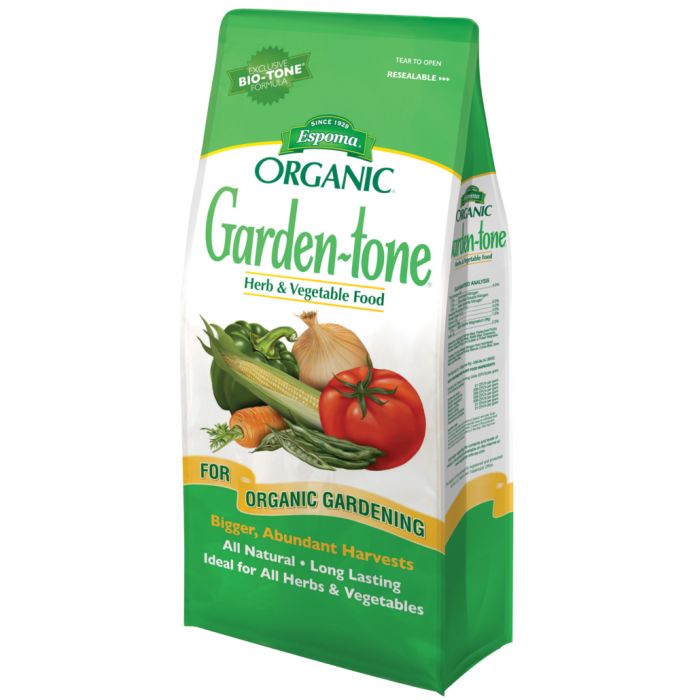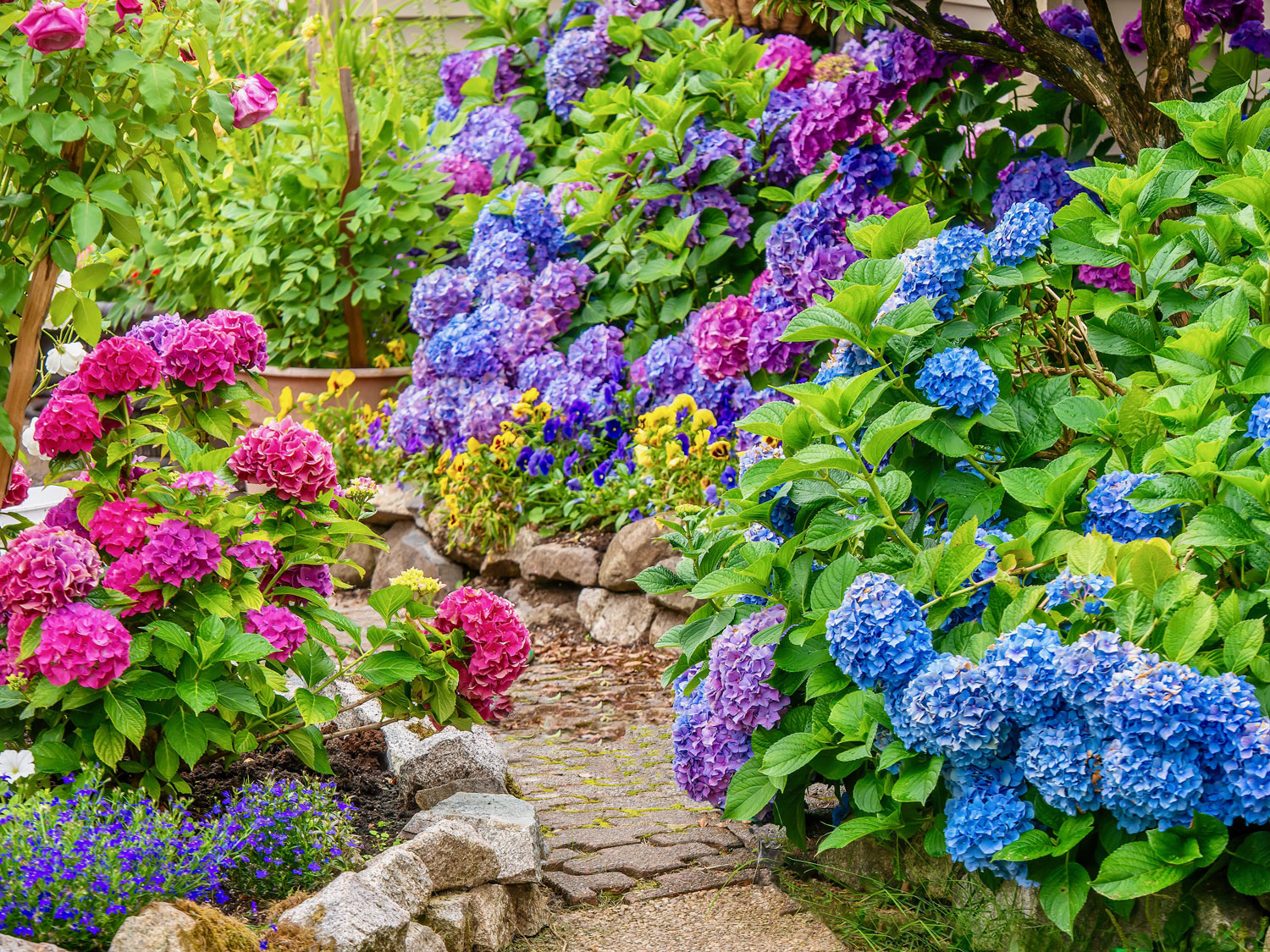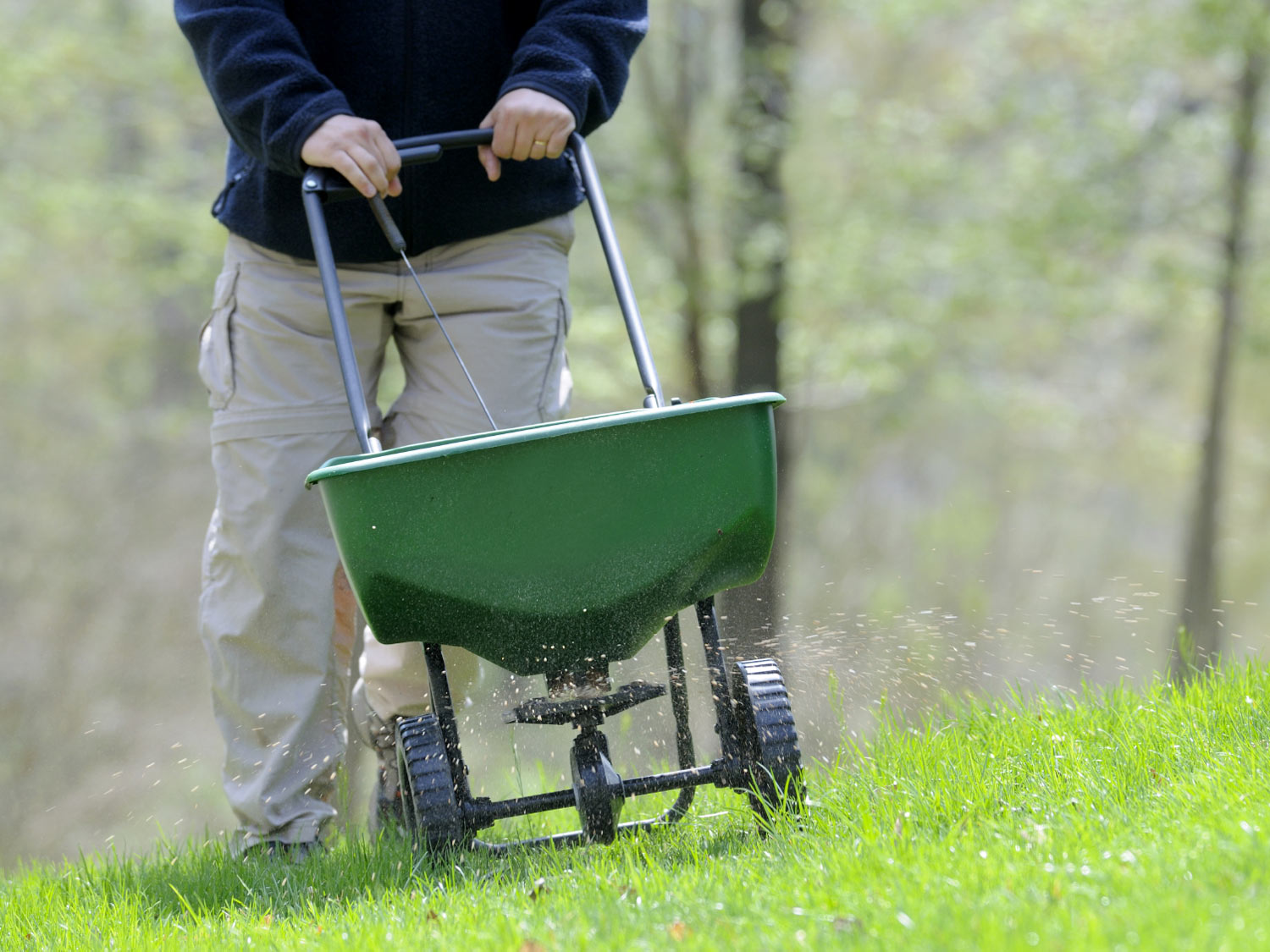Espoma Organic Garden-Tone

Description
3-4-4 Garden-Tone, All Natural For All Vegetables, Contains Bio-Tone, Our Proprietary Blend Of Beneficial Microbes, Which Biologically Enhances The Natural Plant Food To Ensure Superior Plant Growth. Garden-tone is the ultimate choice for feeding all your favorite herbs and vegetables! It’s a rich blend of the finest natural & organic ingredients and enhanced with humates & beneficial microbes. No sludges or fillers are ever used. And because it’s made in Espoma's state-of-the-art solar powered manufacturing facility, consistency and quality are guaranteed.
Feed your plants the best!
Achieve a lush, vibrant garden with the help of Gertens wide selection of fertilizers! Whether you're tending to your lawn, plants, flowers, or vegetables, proper fertilization is key to promoting healthy growth and abundant blooms. Trust Gertens to provide the nutrients your garden craves, ensuring your outdoor oasis thrives throughout the season.
Details
- Natural & Organic fertilizer for an abundant harvest Grow delicious cool and warm season vegetables like lettuce, kale, tomatoes, peppers & squash
- Use for herbs like basil, chives, sage, rosemary, parsley & oregano
- Long lasting, slow-release feeding with our exclusive Bio-tone Microbes
- Grow an abundant harvest of nutritious & flavorful vegetables
- 100% natural & organic ingredients with no fillers or sludges
FOR USE ON: On all herbs and vegetables such as:
- Hardy (cool season) crops: Broccoli, Brussels sprouts, Cabbage, Collards, English peas, Kale, Kohlrabi, Leeks, Mustard, greens, Parsley, Radish, Spinach, Turnip
- Semi-hardy crops for early spring or fall: Beets, Carrot, Cauliflower, Celery, Chinese cabbage, Endive, Irish potatoes, Lettuce, Radicchio, Rutabaga, Salsify, Swiss chard
- Summer crops (Plant after danger of frost): Beans, Corn, Cucumber, Eggplant, Melons, Okra, Peppers, Pumpkins, Summer squash, Sweet potatoes, Tomatoes
WHEN TO USE: Mix into the garden soil prior to planting. Seedlings / Transplants: 7 – 10 days after planting. Established plants: Monthly, May through Aug. Herbs will only require feeding at time of planting or after a large harvest.
HOW MUCH TO USE:
- Soil Preparation for Vegetable Garden: Apply 3.5 lbs. per 50 square feet and work into the top 4 to 5 inches of soil. When possible, mix with organic matter such as compost, humus, or peat moss.
- Feeding Vegetables and Tomatoes:
- Single plants: Apply up to 1/3 cup per plant.
- Rows: Apply 1-1/3 cup each side per 5 ft. of row or 10 lbs. each side per 100 ft. of row.
HOW TO APPLY:
- Individual plants – Sprinkle around the drip line of the plant.
- Row crops – sprinkle evenly on each side of row.
- Do not allow plant food to contact the main stem or foliage of the plant.
More Information
| Safe to Use On | Gardens, Tomatoes, Vegetables |
|---|---|
| Fertilizer Composition | Granular |
| Brand | Espoma |


